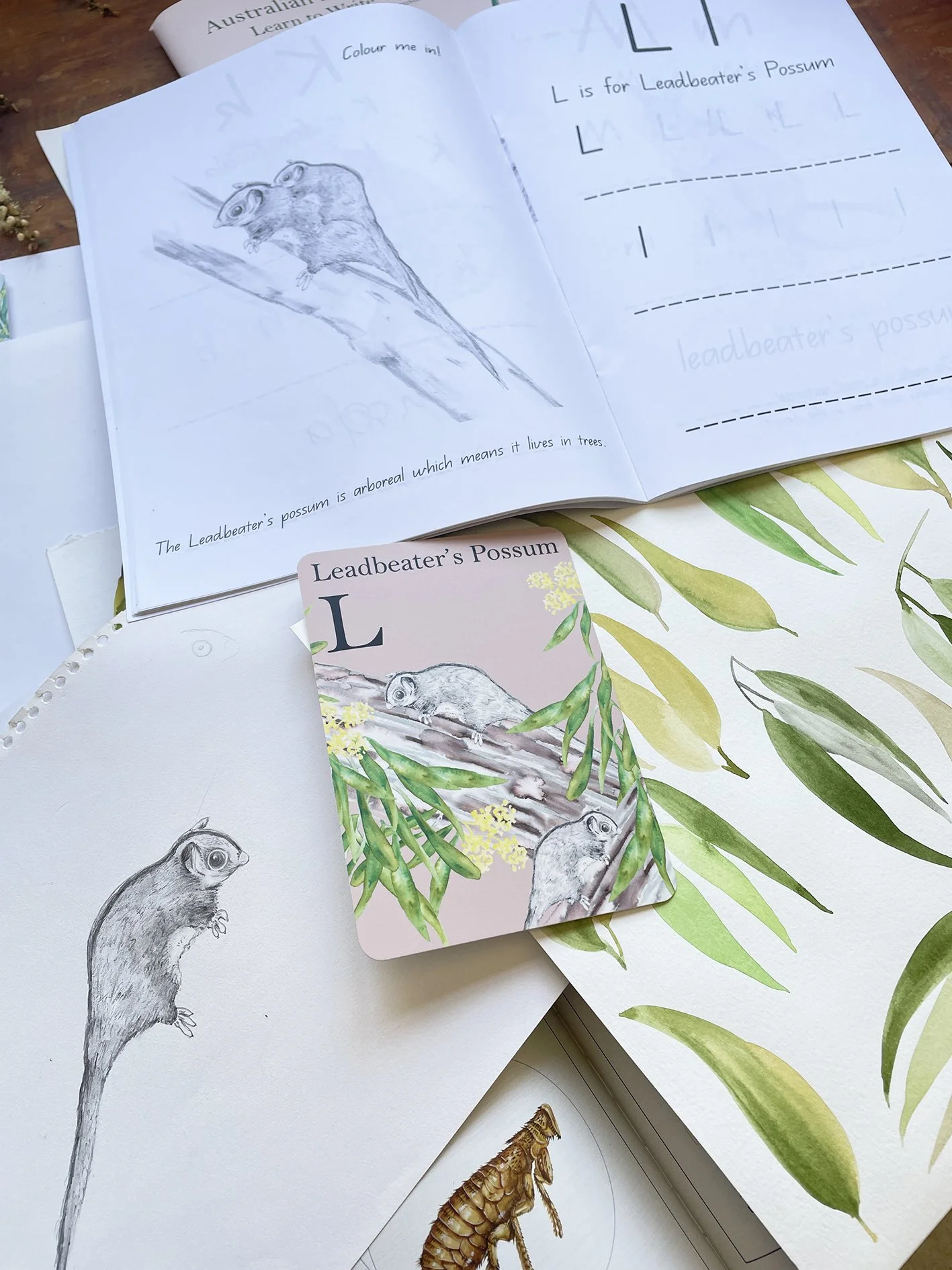Home and Habitat and the Leadbeater’s Possum.
I am a word nerd and love to find out how a word began. I wish latin had still been on offer when I was at school. The origins of habitat aren't exactly what you would expect. The word goes back to the Latin habitare meaning "to live or dwell," which itself goes back to habere meaning "to have, to hold, possess." If we lived on it we owned it.
This was the Modern Latin word that began the part of the scientific description of a plant or animal species that told its locality. [The more general sense of "dwelling place" happened much later in the mid 1800’s.]
Flora and fauna are firmly attributed to the science world and so we use the term habitat for them. We use it in the marketing world for home-wares too but when we are always referring to the sense of home.
Now home brings up all kinds of interesting emotional responses but the reality is we make our home where we live. And often – even when we are burnt out or flooded, we as a species we tend to return to the place we lived. Humans can adapt easily to other places – but in most cases our wildlife cannot. And plenty of our animals and plants are VERY specific when it comes to living and breeding.
For example, the Leadbeater’s Possum needs a minimum of four stags for nesting. A Stag is a huge, dead or dying tree – usually over 200 years old in Mountain Ash forests. This is very specific! Knocking these trees over and throwing up some nesting boxes isn’t viable for these picky breeders. They also require wattle trees in the undergrowth for sap feeding and smooth barked gums with hanging bark ribbons to forage and collect nest materials. The surrounding understory must have dense vegetation so the animals can connect and move around their territory and apparently the slope cannot be too steep I’m not sure why that is.
If you haven’t heard of a Leadbeater’s Possum they are also referred to as Fairy possums and are the faunal emblem of Victoria.
The Leadbeater’s Possum is a small arboreal and nocturnal marsupial which is omnivorous. It’s a tiny creature reaching up to 170mm max in body length and only weighs around 160gms! It looks like a sugar glider but doesn’t have the gliding membrane [or patagium] and its long tail is wider towards the tip instead of the base near its bum. Leadbeater’s possums love wattle sap and eucalyptus manna but also each crickets and flies, spiders and moths.
Current data states there are around 40 possums living in the Yellingbo State Nature Conservation Reserve alongside the Helmeted Honeyeater, with the other Victorian Faunal Emblem.
A critically endangered species, they are considered the 7th most imperilled Australian mammal, with a 29% likelihood of extinction within 20 years.
Logging and fragmentation of the Mountain Ash forests in the Central Highlands for paper production has resulted in the loss of vast areas of habitat. Following the February 2009 bushfires in the Central Highlands - over 45% of their reserved habitat was destroyed by the intense fires.
These guys require specialised help – but we can all help Australian wildlife in our own way planting a pot or a garden that will help out some of our native critters. Gardening Australia always has great tips and there is an app called Nature Blocks by the CVA designed to get people creating habitats for their local fauna.
You can also help kids discover and learn about the Leadbeater’s Possum and other threatened Australian wildlife through our Educational Flashcards and Workbooks and playing cards. They also feature on our Christmas cards because they are so darn adorable.

